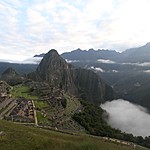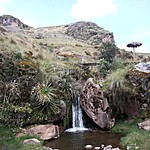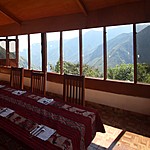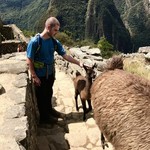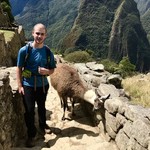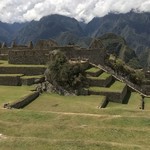
Best Treks to Machu Picchu

Planning a trek? Let one of our trusted local operators help you plan your trip.
Planning Your Trek
Machu Picchu is only accessible by train or by foot. Roughly eighty-percent of visitors reach Machu Picchu by train, and 500 hikers start out on Inca Trail each day, Peru’s most popular trek. Technically, all these treks follow 'Inca' trails, but only one is known as the 'classic route'. (Securing a permit for the Inca Trail must be done 4-6 months in advance.)
Luckily, if you’re looking to avoid the crowds and want to have a unique experience, there are a number of great options for getting to Machu Picchu. We’ve put together a brief summary and description of the various options to help you decide which route is best for you.
Classic Inca Trail (4-5 days)

| Fast facts | |
|---|---|
| Duration | 4-5 days |
| Max. elevation | 4215m |
| Start/finish | Km 82 / Machu Picchu |
| Difficulty | Moderate |
| Style | Camping |
| Highlights | The classic Inca trek through the Sun Gate to Machu Picchu |
View the full itinerary. One of the world's most famous treks, the Inca trail follows one of the ancient paths of the Inca's as it winds it's way up toward the Sun Gate of Machu Picchu. The total distance is around 38 km., and we recommend doing this trek in 5 days (as opposed to 4) which allows you the time to really enjoy it, to admire the views, and to explore the ruins along the way. This will also allow you to trek a half-day ahead of or behind the majority of trekkers, so you have the camps and trails to yourself.
The main consideration for this trek is that you must purchase a permit in advance, which often sell out quickly (permits go on sale every January). Five hundred people are allowed to start the trek each day, as well as 250 people (as of recently) are issued a single-day permit to join in on the last day of the trek. Because of the large number of people, camping and guide/porter restrictions are highly regulated, where you camp in designated camp sites each night.
Needless to say, this trek is popular for a reason. Not only does it pass through great ruins along the way, you'll enjoy amazing views of rivers and snow-capped mountains, before finally passing through the famous Sun Gate into Machu Picchu at sunset on your last day.
Note: If you're short on time, check out the Short Inca Trail, a one-day trek along the last day of the Inca Trail.
Salkantay Trek (5 days)



| Fast facts | |
|---|---|
| Duration | 4-8 days |
| Max. elevation | 4660m (Salkantay pass) |
| Start/finish | Mollepata/Aguas Calientes |
| Difficulty | Moderate |
| Style | Camping/Lodges |
| Highlights | Biodiversity, high mountain pass, cloud forest, ruins |
View the full itinerary. The most popular alternative to reach Machu Picchu, the Salkantay trek is similar in duration and difficulty to the Inca Trail. What it lacks in ancient archeological sites along the way, it makes up for it in natural abundance. You’ll pass through a multitude of microclimates on your way up to 4660m, then descend into the Peruvian cloud forest—all in few days. Snow-capped mountains, glaciers, high lagoons and idyllic pastures and high jungle makes this a great trek for people that love nature.
The trek is traditionally done in either 4 or 5 days, with the final night spent in a hotel in Aguas Calientes. The trek is considered to be moderate to challenging in difficulty, with the difficulty lying in some long days of hiking, as well as the altitude of the highest mountain pass that you will cross (4660 m. / 15,200 ft.).
While previously the trek was done with camping on all but the final night, there is now another opportunity for those travelers who don’t feel the need for roughing it. In the Salkantay Lodge-to-Lodge Trek, you’ll travel through the same gorgeous countryside, with a side visit to the Llactapata Pass for the first glimpse from afar of Machu Picchu, something very few people get the chance to see. Your evenings will be spent in luxurious lodges built to blend in with their surroundings. If you prefer, the trail can also be done on horseback.
Choquequirao Trek (7 days)



Chat with a local specialist who can help organize your trip.
| Fast facts | |
|---|---|
| Duration | 7-13 days |
| Max. elevation | 4668m (Yanama pass) |
| Start/finish | Cachora/Aguas Calientes |
| Difficulty | Challenging |
| Style | Camping |
| Highlights | Incredible ruins, steep Andean mountains, few people |
View the full itinerary. If you’re looking for the most adventurous trek on the list, this is it. The Choquequirao trek is as challenging as it is rewarding, with switchbacks taking you up and over steep, forest-covered mountains en route to Machu Picchu.
The trek starts with a steep, two-day climb to ruins of Choquequirao, perched high above the Apurimac river (40m higher than Machu Picchu). The Choquequirao ruins are larger than Machu Picchu, and still the process of being reclaimed from the jungle.
While you will enjoy some impressive views of snow-capped mountains and deep canyons along the way, the highlight is when you reach the archaeological site of Choquequirao, an Inca stronghold nearly as impressive as Machu Picchu. Few people undertake the journey to reach here, and trekking is the only way to arrive (although there’s been ongoing speculation to put a cable car in from across the canyon).
Of the trails listed here, though, Choquequirao is probably the most challenging, and should only be attempted by those with a high degree of fitness.
Lares Trek (3 days)

| Fast facts | |
|---|---|
| Duration | 3-5 days |
| Max. elevation | 4640m (Huacahuasi pass) |
| Start/finish | Lares/Ollantaytambo |
| Difficulty | Moderate |
| Style | Camping/Lodges |
| Highlights | Culture, hot springs, high mountain pass |
View the full itinerary. If you’re interested in a cultural experience, the Lares Trek is a great choice. You still get to cross over a high-altitude mountain pass (4640m), yet you’ll pass through several small villages along the way still following a traditional way of life: growing their own crops and herding llamas and alpacas, much the way they have done for centuries.
The trek itself takes three days, starting off in Lares (don’t miss the hot springs!) and taking you away from the crowds of the Sacred Valley into the Andes to the north of the Urubamba. At the end of your trek, on the third day, you’ll catch a train to Machu Picchu, overnighting at a hotel in Aguas Calientes.
While not to be taken lightly, the Lares Trek is the easiest trek relative to the other treks that take you to Machu Picchu. It’s the best trek for fairly fit hikers who want an active holiday but don’t want to push themselves too hard.
For those who enjoy comfort: Mountain Lodges of Peru (who also run the Salkantay Lodge-to-Lodge trek) have developed a 5 or 7 day Lares Adventure to Machu Picchu, staying in their luxury lodges along the way (a third lodge is currently being built for the final day).
Back Door to Machu Picchu (1 day)

| Fast facts | |
|---|---|
| Duration | 1 day |
| Max. elevation | 2210m |
| Start/finish | Cusco/Aguas Calientes |
| Difficulty | Easy |
| Style | Hotels |
| Highlights | Short and easy walk to Machu Picchu, hot springs in Santa Maria |
For those who have little time or inclination to tackle a full-on trek to Machu Picchu, here’s a great alternative. You can take a bus to Santa Maria and, from there, a shared car to Santa Teresa and the Hydroelectric train station. From here, it’s about a 2.5-hour walk to Aguas Calientes. This hike is relatively easy and flat, taking you through the high jungle where you will likely spot orchids along the way, as well as other flowers, bananas, coffee plants, and a multitude of birds.
This short trail, combined with all the walking in Machu Picchu itself, is often enough for people who arrive in Peru with more need of a break than an adventure. In addition, if you can take more of a time-out, Santa Teresa has some relaxing hot springs that you can enjoy.
Llactapata Trek (2 days)

| Fast facts | |
|---|---|
| Duration | 2 days |
| Max. elevation | 3290m |
| Start/finish | Santa Maria/Aguas Calientes |
| Difficulty | Moderate |
| Style | Hotels |
| Highlights | Llactapata ruins, hot springs in Santa Maria |
This is another great option if you’re short on time. Following the same route to Santa Teresa as mentioned above, you spend the night in Santa Teresa enjoying the hot springs before taking off early the next morning for a one-day trek along the Llactapata trail.
The route climbs up switchbacks over a ridgeline before descending through the Llactapata ruins, high above the Urubamba valley with views of Machu Picchu from afar. From here, you’ll descend down to Hydroelectrica and either catch a train or hike the rest of the way to Aguas Calientes.
Ready to start planning your trek?
Get connected to a knowledgeable local trekking specialist in Peru who can help you start organizing your trek. Click here to start planning.

